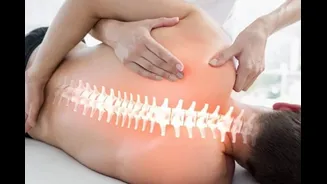As the temperature drops, so does our desire to move. Many people notice that their joints feel stiffer, their muscles tighter, and old aches and pains tend to resurface with the onset of winter. A combination
of reduced physical activity, muscles contracting in response to the cold, and decreased sunlight all contribute to what physiotherapists call “winter stiffness.”
Staying active throughout the season is essential not just for mobility and strength, but also for long-term joint health.
The good news? With a few mindful adjustments and expert-approved physiotherapy strategies, you can keep your body supple and moving comfortably all winter long. Dr. Dharam P. Pandey, Director & HOD, Physiotherapy & Rehabilitation Sciences, HCMCT Manipal Hospitals, Dwarka, Delhi, shares all you need to know:
1. Warm Up; Literally and Physically
Cold weather causes blood vessels to constrict, reducing blood flow to the muscles and joints. This makes them less pliable and more prone to strain or injury. Physiotherapists always recommend beginning your day and your workout with a gentle warm-up.
Simple activities like brisk walking indoors, light dynamic stretches, or applying a hot pack for a few minutes can help prepare your muscles for movement. Spend a little extra time warming up the larger joints in your body, shoulders, hips, and knees, as they tend to bear the brunt of winter stiffness. Even short bouts of movement spread throughout the day can make a noticeable difference.
2. Stretch Smart and Stay Consistent
Stretching is your best defense against stiffness. Regular flexibility exercises improve blood circulation, enhance range of motion, and reduce discomfort in weight-bearing joints.
Experts recommend pairing dynamic stretching in the morning such as arm circles, leg swings, or torso twists with static stretching in the evening to allow your muscles to recover. Yoga and Pilates are particularly beneficial in the colder months, as both combine breathing and movement to keep you engaged while relaxing both the mind and body.
Remember: consistency is more effective than intensity. Just five minutes of stretching every day can be far more beneficial than one intense session a week.
3. Keep Moving, Even Indoors
It’s easy to slip into a sedentary routine when it’s cold and gloomy outside. However, movement is medicine for your joints. If you don’t feel comfortable walking or running outdoors, shift your activity indoors.
Physiotherapists recommend low-impact exercises like stationary cycling, bodyweight workouts, or resistance band routines, which help keep your joints functional without overexertion. For those with arthritis or chronic pain, exercising in warm-water pools can be a great option. Water’s buoyancy supports the body, allowing for smoother, pain-free movement.
4. Prioritise Posture and Ergonomics
Winter often means spending more time indoors, working from home, reading, or watching TV. Poor posture during long periods of sitting can lead to muscle tightness and back pain.
Ensure your workstation is ergonomically set up: use a chair with proper lumbar support, keep your feet flat on the ground, and maintain a neutral spine. Physiotherapists also suggest taking short breaks every 30–45 minutes to stretch your neck, shoulders, and back. Simple movements like shoulder rolls, chin tucks, and back extensions can relieve stiffness and prevent tension build-up.
5. Hydrate and Nourish Your Joints
Dehydration doesn’t only occur in hot weather, cold temperatures can also dry out joint tissues. Maintaining proper hydration and eating foods rich in omega-3 fatty acids, vitamin D, and antioxidants can support joint health and aid recovery after exercise.
Soups, herbal teas, and wholesome meals with seasonal vegetables help maintain both energy levels and joint function through the colder months.
Staying Active Is the Best Therapy
Winter stiffness doesn’t have to slow you down. With consistent movement, stretching awareness, and proper ergonomics, you can keep your body flexible and strong throughout the season.
If you experience persistent pain, numbness, or tingling, consult a qualified physiotherapist for a personalized exercise plan to stay active, mobile, and resilient until brighter, warmer days return.
















